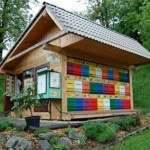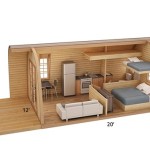Farmhouse Planters: Bringing Rustic Charm Indoors
Farmhouse style, known for its warmth, simplicity, and connection to nature, has become a popular design aesthetic for homes. Integrating farmhouse elements indoors allows for a comfortable and inviting atmosphere. One prominent way to achieve this aesthetic is through the strategic use of farmhouse planters. These planters offer a practical and stylish method for incorporating greenery into the living space, enhancing the overall farmhouse charm.
Farmhouse planters encompass a range of materials, designs, and sizes, making them versatile for various indoor settings. They can contribute to the overall aesthetic by complementing existing furniture, decor, and architectural details. The selection of the right planters plays a crucial role in creating a cohesive and visually appealing farmhouse-inspired interior.
The essence of the farmhouse style lies in its rustic appeal. This means favoring natural materials that offer texture and a sense of history. When selecting farmhouse planters for the indoor environment, a thorough understanding of the available options and their characteristics is paramount.
Key Materials and Their Characteristics
The core materials utilized in creating farmhouse planters are essential for achieving the characteristic look. The choice of materials directly influences the planter's durability, aesthetic appeal, and suitability for various plants.
Terracotta: Terracotta, derived from baked clay, is a time-honored material widely utilized in planter creation. Its porous nature facilitates air and moisture movement, promoting healthy root development. The warm, earthy tones of terracotta resonate well with the farmhouse palette of browns, creams, and greens. However, the porous nature also means that terracotta planters dry out faster and may require more frequent watering. Furthermore, terracotta can be sensitive to freezing temperatures and may crack or break if exposed to prolonged cold.
Wood: Wood is a quintessential material in farmhouse design, lending warmth and natural texture. Wooden planters can be crafted from various types of wood, including reclaimed wood, which adds to the rustic aesthetic. Wooden planters can be stained or painted to match the existing decor. Some popular wood options include pine, cedar, and oak. However, wood is susceptible to moisture damage. To prolong the lifespan of wooden planters, it is crucial to treat them with a sealant or liner to prevent rotting and water damage.
Metal: Metal planters, particularly those with a galvanized or aged finish, can contribute a touch of industrial chic to the farmhouse interior. Metal options include galvanized steel, copper, and wrought iron. These metals offer durability and a distinct visual appeal. Galvanized steel provides a rustic, utilitarian aesthetic, while copper contributes warmth and elegance. Wrought iron adds a sense of sophistication. Metal planters can sometimes heat up quickly in direct sunlight, potentially harming plant roots. Therefore, it's important to consider placement and monitor soil temperature. Additionally, some metals can react with certain types of soil, so using a liner is recommended.
Wicker and Rattan: Woven materials like wicker and rattan offer a natural and textured look, complementing the farmhouse aesthetic. These planters are lightweight and suitable for both indoor and covered outdoor spaces. The intricate weaves provide visual interest and enhance the organic feel of the interior. However, wicker and rattan are prone to moisture damage and can become brittle over time. Regular cleaning and protection from excessive humidity are necessary to maintain their appearance and longevity.
Ceramic: Ceramic planters offer a smooth, refined appearance and come in a variety of colors and glazes. While they may not possess the same rustic qualities as terracotta or wood, they can still complement a farmhouse interior when chosen in neutral tones or with simple designs. Ceramic planters are less porous than terracotta, which helps retain moisture. However, they can be heavy and susceptible to cracking if dropped. Opting for high-quality ceramic planters can improve their durability.
Design Elements and Aesthetic Considerations
Beyond the material, the design of the planter plays a significant role in achieving the desired farmhouse look. Design elements encompass shape, size, finish, and added details, all of which contribute to the overall aesthetic impact.
Shape and Size: The shape and size of the planter should be proportional to the plant it will house and the space it will occupy. Common shapes include round, square, rectangular, and oval. Larger planters can serve as statement pieces, while smaller planters can be grouped together to create a cohesive display. Consider the growth habit of the plant when selecting the size of the planter. For instance, plants with extensive root systems require larger planters to accommodate their growth.
Finish and Texture: The finish and texture of the planter contribute significantly to its aesthetic appeal. Distressed finishes, such as chipped paint or aged metal, enhance the rustic farmhouse look. Textured surfaces, such as rough-hewn wood or hammered metal, add visual interest and tactile appeal. Smooth finishes, such as glazed ceramic, can provide a more refined look. The ideal finish will depend on the overall design scheme of the room. It's crucial to consider how it will blend with existing furniture and decor.
Embellishments and Details: Embellishments and details can add character to farmhouse planters. Examples include rope handles, metal bands, stenciled designs, and embossed patterns. These details can enhance the planter's visual appeal and contribute to the overall farmhouse aesthetic. Simple details, such as a burlap ribbon or a small wooden tag, can also add charm. The key is to choose embellishments that complement the planter's material and finish and avoid anything overly ornate that detracts from the rustic simplicity of the farmhouse style.
Color Palette: The color palette of farmhouse planters usually revolves around natural, muted tones. Whites, creams, grays, browns, and greens are commonly used to create a calming and harmonious atmosphere. Pops of color can be introduced through the plants themselves, but the planters themselves should generally remain neutral. This allows the greenery to stand out while maintaining a cohesive look. Earthy tones like terracotta and weathered wood also contribute to the farmhouse aesthetic.
Plant Selection and Integration
The selection of plants is critical for enhancing the farmhouse aesthetic and creating a thriving indoor garden. Pairing the right plants with the appropriate planters can elevate the overall design and contribute to a healthy and vibrant living space.
Complementary Plants: Choosing plants that complement the farmhouse style is essential. Herbs like basil, rosemary, and thyme not only add fragrance and visual appeal but also align with the farmhouse aesthetic. Ferns, with their lush green foliage, bring a touch of the outdoors inside. Succulents and cacti, with their unique shapes and textures, can also complement the farmhouse style, particularly when planted in terracotta or metal containers. Flowering plants, such as lavender or geraniums, add pops of color and fragrance.
Plant Placement: Careful consideration should be given to the placement of planters within the indoor environment. Planters can be placed on windowsills, shelves, tables, or floors, depending on their size and the space available. Grouping planters together can create a visually appealing display. Consider the light requirements of the plants when selecting a location. Some plants require bright, direct sunlight, while others thrive in indirect light. Arrange the plants based on their needs to ensure they receive adequate light.
Maintenance and Care: Proper maintenance and care are essential for ensuring the health and longevity of indoor plants. Regular watering, fertilization, and pruning are necessary to keep plants thriving. Use well-draining soil to prevent root rot. Monitor plants for pests and diseases and take action promptly to prevent infestations from spreading. Dusting the leaves regularly helps improve photosynthesis. Adjust watering schedules based on the plant's specific needs and the humidity levels in the environment.
Vertical Gardening: Vertical gardening is an excellent way to incorporate more greenery into a farmhouse interior, especially in limited spaces. Wall-mounted planters or hanging baskets can be used to create a living wall or a cascading display of foliage. Vertical gardens add visual interest and can help purify the air. Wood or metal structures can be used to build the vertical garden. Select plants that thrive in the specific lighting conditions available.
By thoughtfully selecting farmhouse planters, choosing complementary plants, and providing proper care, it's possible to create an indoor oasis that embodies the warmth, simplicity, and natural beauty of the farmhouse style.

Barnyard Designs Farmhouse Herb Garden Planter Indoor Set With Tray Or Outdoor Apartment Window Box Windowsill

Autumn Alley Indoor Farmhouse Planter Set 2 Pc Wood Galvanized Flower Pots Home Decor

Wall Vase Planter Indoor Decor Living Room Farmhouse Home Planters Pots

Autumn Alley Farmhouse Planter Set Wooden White Indoor Pots For Plants Galvanized Planters

Sunnydaze Decor 2 Pack Round 11 5 In W Medium Blue Ceramic Farmhouse Indoor Outdoor Planter With Drainage Holes Ap 002 At Com

Free Set Of Four 4 Rustic Farmhouse Wooden Planter Boxes

Barnyard Designs Farmhouse Herb Garden Planter Indoor Set With Tray Or Outdoor Apartment Window Box Windowsill

Wall Planter Galvanized Boho Decor Kitchen Indoor Modern Farmhouse Pot Rustic Home

10 Modern Farmhouse Planters Under 50 You Ve Gotta Have

Metal Wagon Indoor Planter Garden Farmhouse Decor Vintage Small Flower Cart Planters For Outdoor Plants Pots Wheelbarrow








